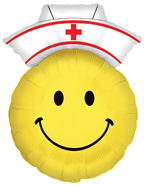Convenient and Compassionate Family and Primary Medical Care
Pinnacle Hospital is dedicated to developing a long-term, patient-centered relationship that is incredibly satisfying for both the patient and physician. Patients are empowered and encouraged by our doctors to be a partner and active participant in their medical care. We understand that, as our patient, you entrust us with your good health. We provide the following primary, medical and family care services for patients of all ages:

Operating Room Team members include
- Treatment of minor illnesses and injuries
- Management of acute and chronic diseases
- Physical exams, pre-employment exams and health assessments
- Vaccinations and immunizations, including flu and pneumonia
- Women’s health
- Sports medicine evaluations and treatment
- Hospital care
- Wellness, health education and lifestyle modification services
- In-office laboratory testing
Ask the Doctor

Q: I have gotten running injuries in the past. How can I avoid these? From Brad, Crown Point
A: “Don’t run and you’ll heal,” are the words that every diehard runner dreads hearing. Runners don’t want to stop running, and the good news is that you can run through most pain without causing permanent damage. But if pain changes your running style, stop and see your Family Physician. Most common running injuries are due to overuse, overtraining, or a biomechanical flaw in body structure and motion.
Here’s how to prevent and treat the 10 most common running injuries:
- Runner’s Knee: Runners knee is a wearing away of the back of the kneecap, causing pain in the knee. This can occur because of decreased strength of middle quadriceps muscles. What to do? The condition is typically treated with a full-length sports orthotic and strengthening exercises directed at the middle quad muscle.
- Stress Fractures: Stress Fractures can be caused by overtraining, a shortage of calcium, or by some basic biomechanical flaw—either in your running style in or out of your body structure. The more the miles, the greater the stress. And this is one injury you should not ignore. Stress Fractures are like a hardboiled egg, the shell is cracked and next stop is a full-fledged fracture.
- Iliotibial band syndrome, a.k.a. ITBS: Marked by a sharp, burning knee or hip pain, ITBS is a very common running injury among marathoners. Indeed, it’s responsible for as many as 80% of all overuse pains on marathon day. The ITB is a ligament that runs along the outside of the thigh—from the top of the hip to the bone outside of the knee. It stabilizes the knee and hip during running, but when it thickens and rubs over the bone, the area can become inflamed or the band itself may become irritated—causing pain. The best stretch? Place the injured leg behind the good one. If the left side is sore, cross your left leg behind your right one. Then lean away from the injured side toward your right side. Hold for 7 to 10 seconds and repeat on each side 7 to 10 times. Anti-inflammatory drugs such as ibuprofen can help get the swelling down.
- Shin Splints: Shin Splints are a running injury that results from a biomechanical flaw in your foot (which can be made worse by a shoe that doesn’t offer enough support) and/or overtraining. Your best bet is to switch to a thicker shoe and make sure to stretch out your calf muscles before and after running.
- Plantar fasciitis: Also known as pain in the middle of arch of the foot, plantar fasciitis is a running injury most frequently caused by an abnormal motion of the foot or too-tight calf muscles. Normally, while walking or during long –distance running, your foot will strike the ground on the heel, then roll forward toward your toes and inward to the arch. Your arch should only dip slightly during this motion but if it lowers too much, you have what is known as excessive pronation. What to do? It is usually corrected with an orthotic and calf stretches before and after running.
- Achilles tendonitis: Achilles tendonitis is a running injury that typically occurs from abnormal foot stroke in push-off and too-tight calf muscles. Orthotics and doing the same stretch recommended for shin splints.
- Muscle Pulls: Whether hamstring, quads or any other muscles, pulls come from not being flexible and/or overexerting specific muscles. The best way to treat a pull is to do more stretching before and after a run.
- Ankle sprains: Ankle sprains occur because runners don’t always watch where they are going. Pay attention to where you are running or run on a really good , level track where there is less chance of finding a gopher hole. When and if an injury does occur, ibuprofen and ice can help reduce swelling and pain.
- Dizziness and Nausea: Most runner’s drink too much, not too little water. This can cause over hydration—also known as diluting, which lowers sodium levels in the body and stresses the kidneys. Common symptoms of diluting are nausea, vomiting, and dizziness. To avoid these problems, drink approx one- cup (8 oz.) of fluid every 20 minutes while running. This way you will avoid becoming diluted.
- Blisters: One of the most common sports injuries, blisters on the feet are usually caused by friction combined with excessive moisture. Avoid them by choosing synthetic socks—such as those by Nike Dryfit- that wick away moisture.
Remember, about 90% of running injuries are due to overtraining, so a very slow buildup is important, and so are rest days. You’ll save yourself pain and reach your goals. If you avoid the ‘terrible toos’—training too much, too soon, and too fast!
Author- Dr. Brent Jacobus, Family Practice
Winfield Family Medicine
Physicians now accepting new patients! Call today to schedule your first visit 219.796.4114 with a physician near you.



